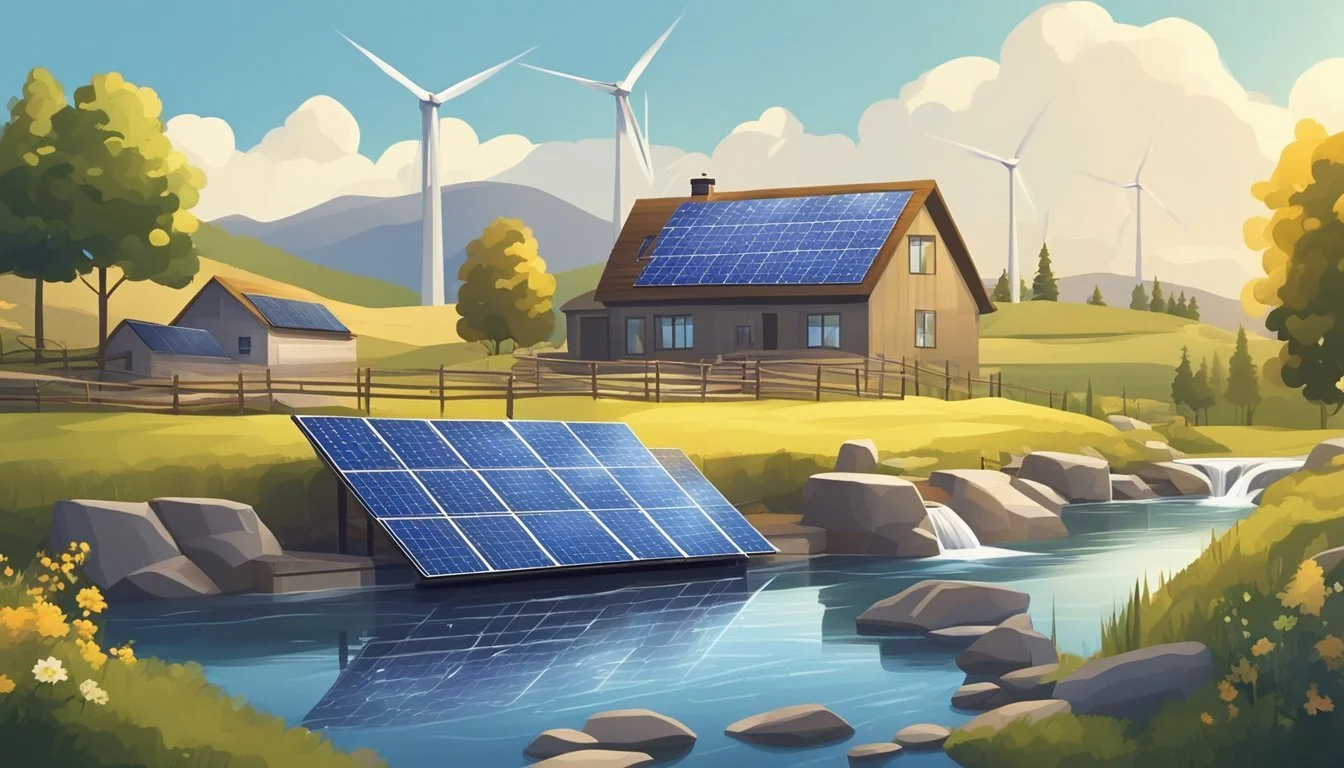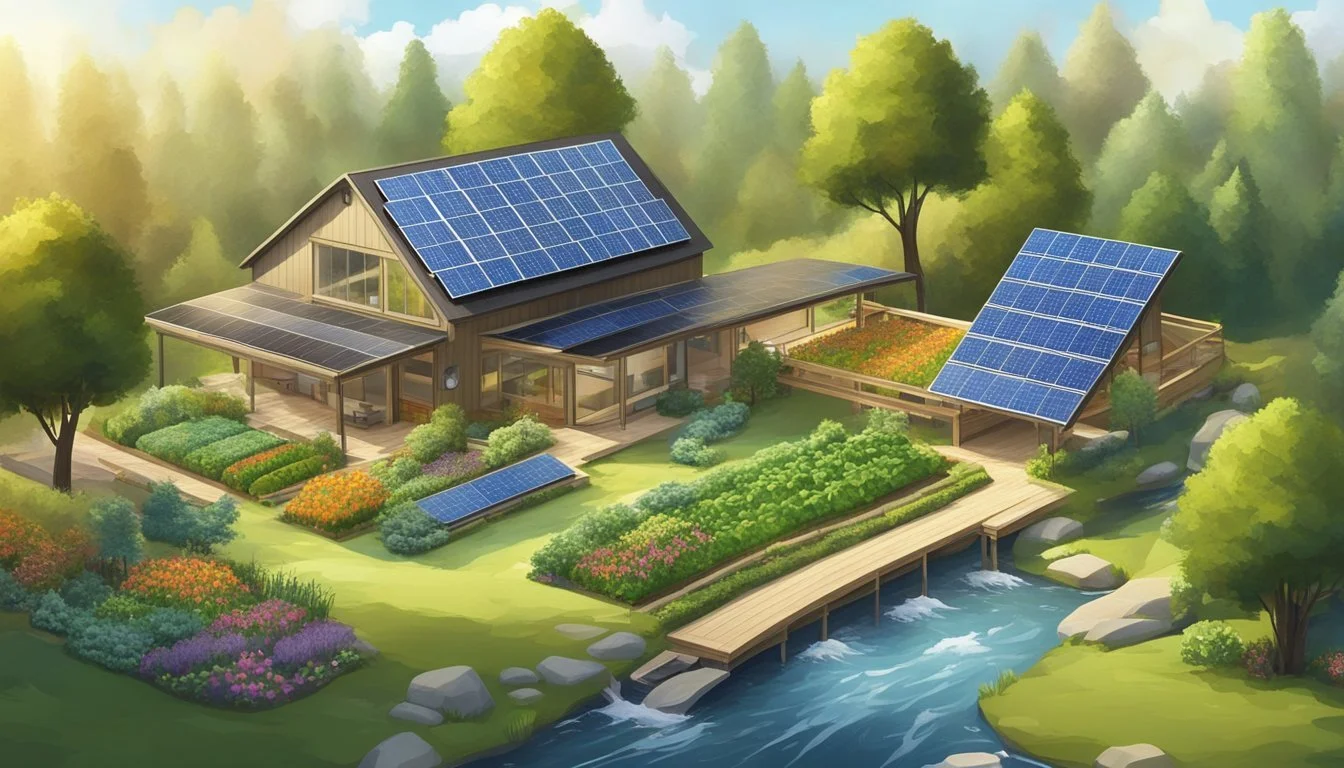Homestead Solutions for Energy Independence
Achieving energy independence is becoming a top priority for homesteaders, driven by a desire to reduce carbon footprints and secure a self-sustaining lifestyle. By harnessing renewable energy sources, they can diminish reliance on traditional power grids, which are vulnerable to outages and fluctuating energy costs. The advancements in technology have made renewable energy systems such as solar power and wind power more accessible. These installations not only offer clean energy solutions to households but also promise long-term savings on energy costs despite the initial investment.
As the interest in off-grid living grows, energy solutions have evolved to meet the diverse needs of homesteaders. Solar energy systems, which transform sunlight into electrical energy, are particularly effective and have become synonymous with off-grid energy independence. They cater to a range of energy requirements, from lighting and heating to running appliances. For locations that don't consistently benefit from sunlight, alternative energy options like wind power or hydropower can be integrated to ensure a reliable source of energy. This multifaceted approach to energy production is essential to maintaining a steady supply of energy, considering natural variables and the occasional need for backup power.
Forethought in energy assessment is crucial in planning for energy independence. Homesteaders must estimate their energy demand and design a system capable of producing sufficient energy output, while also factoring in energy storage solutions for excess energy generation. Implementing energy-efficient tools and buildings can further enhance the capacity of these off-grid energy solutions. Despite the upfront costs, renewable energy systems can lead to significant energy savings, offering homesteaders a sustainable way to meet their energy needs, free from the constraints and unpredictability of conventional utilities.
Benefits of Off- Grid Living
Off-grid living affords individuals independence from public utilities and provides an opportunity to tap into renewable energy systems for a more sustainable lifestyle.
Avoiding Grid Dependence
Off-grid systems harness renewable energy sources, such as solar power and wind power, eliminating reliance on traditional power grids. This independence allows residents to avoid the fluctuating energy costs and potential power outages that can be associated with grid dependence. By using renewable energy systems, homeowners ensure access to electricity even when the grid is compromised by natural disasters or other disruptions.
Ensuring Reliable Power
Off-grid living results in the creation of an energy-efficient homestead through the strategic use of renewable sources like solar energy systems and wind turbines. These systems, paired with energy storage options like batteries and charge controllers, provide a reliable source of power. They are designed to cover the homestead's energy requirements, with the potential to generate excess energy. Initial costs may be higher due to upfront costs for equipment and installation, but in the long term, residents benefit from significant energy savings and a lower carbon footprint.
Setting Up Solar Systems
Establishing a solar system is a pivotal move for homesteaders aiming for energy independence. This requires a detailed understanding of the components involved and the precise sizing of the system to meet specific energy needs.
Understanding Charge Controller Optimization
A solar charge controller is a critical component in a photovoltaic (PV) system. Its role is to regulate the voltage and current from the solar panels to the batteries, preventing overcharging and extending battery life. There are two main types of charge controllers:
PWM (Pulse Width Modulation): These controllers are generally less expensive and appropriate for smaller systems where efficiency is not critical.
MPPT (Maximum Power Point Tracking): MPPT controllers optimize the charge from the panels by finding the maximum power point and can be 30% more efficient than PWM controllers, making them ideal for larger and more complex systems.
Optimizing a charge controller involves:
Selecting the right type based on system size and efficiency needs.
Properly setting the controller to match the voltage of the PV array to the voltage of the battery bank.
Ensuring the controller has adequate capacity to handle the current from the PV array.
Sizing Your System Properly
Sizing a solar system properly is essential to meet a homestead's energy requirements without excessive initial costs. The process involves:
Energy Assessment: Determining the total watt-hours per day used by all the appliances and tools on the property.
Sunlight Evaluation: Calculating the average solar irradiance for the location, considering seasonal variations.
A basic calculation for sizing might look like this:
List appliances and their wattage:
Refrigerator: 150 watts
Lights: 60 watts
Water Pump: 120 watts
Calculate daily energy use: Multiply wattage by hours used per day.
Factor in inefficiencies and contingencies: Weather, seasonal changes, and potential growth in energy needs.
Decide on battery storage capacity: This ensures backup power during a power outage or periods with little sunlight.
Remember that the total wattage of solar panels needs to exceed the average daily consumption to account for inefficiencies and low-light days. Energy storage systems should also be scaled accordingly to store excess energy, ensuring a reliable source of electricity even when conditions are less than ideal.
Supplementing with Other Sources
Maximizing energy independence on a homestead requires a multi-faceted approach. While solar energy systems provide a substantial amount of electricity, supplementing with other renewable sources can ensure consistent power even in variable conditions.
Harnessing the Power of Wind
Wind energy complements solar power due to its availability during different weather patterns and times of day. By installing wind turbines, homesteaders can tap into the kinetic energy of wind, converting it into a reliable source of electricity. The effectiveness of wind power is site-dependent, requiring an energy assessment to ensure the location receives sufficient wind flow. The initial costs for wind power installations comprise the turbine, tower, and associated electrical components, such as charge controllers and energy storage systems. In areas experiencing consistent wind, turbines provide a significant energy output, which can offset the need for grid electricity and further reduce the carbon footprint of the homestead.
Energy Storage: Advanced battery systems store excess electricity for use during calm periods.
Maintenance: Regular checks are essential to ensure long-term reliability and performance.
Utilizing Local Hydropower
For those with access to running water on their property, micro-hydro systems can offer a cost-effective and continuous supply of electricity. The energy produced by hydro systems is generated by the flow of fresh water, which can be harnessed to produce power with minimal environmental impact—making it a clean energy solution. Hydropower relies on a consistent flow of water; therefore, homesteaders must evaluate the availability of natural resources and conduct a thorough energy assessment. The upfront investment includes the hydro generator and the infrastructure to divert water, but the low operating costs and high energy output result in long-term energy savings.
Reliable Source: Hydropower is less susceptible to weather fluctuations compared to solar and wind.
Homesteaders pursuing off-grid living can enhance their renewable energy systems by considering various renewable sources like wind and hydropower, which can reduce energy costs and provide backup power during power outages or natural disasters. Integrating multiple renewable systems not only ensures a reliable supply of electrical energy but also helps in achieving a sustainable and energy-efficient lifestyle.
Becoming Energy Efficient
Achieving energy independence on a homestead involves both identifying areas of energy savings and actively reducing energy usage and costs.
Finding Energy Savings
Energy assessment plays a crucial role in finding energy savings. Homesteaders must evaluate their current energy demand and energy output, which includes determining the efficiency of appliances and the home's overall energy consumption. By assessing these factors, they can pinpoint where inefficiencies lie, as well as understand the upfront costs of renewable energy systems.
Renewable Energy Sources: Incorporating renewable sources such as solar power and wind power can significantly lower the homestead's carbon footprint.
Energy Storage: Advancements in technology have improved energy storage options, allowing for the retention of excess energy produced during peak conditions.
Implementing off-grid energy solutions like solar energy systems and wind turbines can lead to long-term energy savings. Moreover, these systems ensure continuous electricity even during a power outage or natural disaster.
Reducing Energy Usage and Costs
Reducing energy usage is pivotal in lessening the overall cost of energy. Homesteaders should use energy efficient appliances and adopt habits that decrease energy consumption.
Insulation and Building Design: Proper insulation and building design can help maintain temperatures, lessening the demand for heat and reducing energy costs.
Renewable Energy Production: By generating their own electricity, homesteaders are less reliant on traditional power grids and protect themselves against fluctuating utility prices.
Investing in solar panels, wind turbines, or hydro power systems involves initial costs, but results in a more self-sufficient living and could provide backup power. Additionally, coupling these systems with charge controllers and energy storage solutions allows for a more consistent and reliable source of electricity.
Utilizing natural resources for energy and water needs, such as using solar energy to heat fresh water, can lead to substantial reductions in energy bills. Lastly, replacing traditional tools with manual ones where possible conserves electrical energy and kinetic energy, further pushing a homestead towards energy independence.





